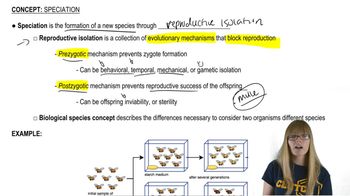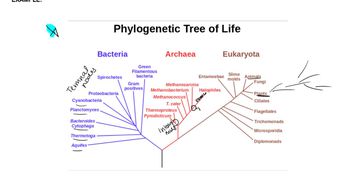What lines of evidence support the hypothesis that modern humans evolved in Africa and then subsequently migrated throughout the globe?
Table of contents
- 1. Introduction to Genetics51m
- 2. Mendel's Laws of Inheritance3h 37m
- 3. Extensions to Mendelian Inheritance2h 41m
- 4. Genetic Mapping and Linkage2h 28m
- 5. Genetics of Bacteria and Viruses1h 21m
- 6. Chromosomal Variation1h 48m
- 7. DNA and Chromosome Structure56m
- 8. DNA Replication1h 10m
- 9. Mitosis and Meiosis1h 34m
- 10. Transcription1h 0m
- 11. Translation58m
- 12. Gene Regulation in Prokaryotes1h 19m
- 13. Gene Regulation in Eukaryotes44m
- 14. Genetic Control of Development44m
- 15. Genomes and Genomics1h 50m
- 16. Transposable Elements47m
- 17. Mutation, Repair, and Recombination1h 6m
- 18. Molecular Genetic Tools19m
- 19. Cancer Genetics29m
- 20. Quantitative Genetics1h 26m
- 21. Population Genetics50m
- 22. Evolutionary Genetics29m
22. Evolutionary Genetics
Phylogenetic Trees
Problem D.7
Textbook Question
Carl Linnaeus, the 18th-century botanist who laid the foundation for the modern system of taxonomic nomenclature, placed chimpanzees and humans in the same genus. Discuss the merits of this classification.
 Verified step by step guidance
Verified step by step guidance1
Step 1: Understand the basis of taxonomic classification, which groups organisms based on shared characteristics and evolutionary relationships, with genus being a rank that includes species that are closely related.
Step 2: Review the morphological and genetic similarities between humans and chimpanzees, such as DNA sequence similarity (approximately 98-99%), similar anatomical features, and shared behavioral traits.
Step 3: Consider the evolutionary perspective, noting that humans and chimpanzees share a recent common ancestor, which supports grouping them in the same genus from a phylogenetic standpoint.
Step 4: Evaluate the merits of Linnaeus's classification by discussing how placing humans and chimpanzees in the same genus reflects their close evolutionary relationship and helps clarify biological similarities.
Step 5: Reflect on any limitations or controversies of this classification, such as the implications for human uniqueness and the criteria used for defining genera in modern taxonomy.
 Verified video answer for a similar problem:
Verified video answer for a similar problem:This video solution was recommended by our tutors as helpful for the problem above
Video duration:
2mPlay a video:
Was this helpful?
Key Concepts
Here are the essential concepts you must grasp in order to answer the question correctly.
Taxonomic Classification and Nomenclature
Taxonomy is the science of naming, defining, and classifying organisms based on shared characteristics. Linnaeus developed a hierarchical system (kingdom, genus, species) that groups organisms by similarities, providing a universal language for biology. Understanding this system is essential to evaluate why humans and chimpanzees might be placed in the same genus.
Recommended video:
Guided course

Sex Determination
Genus Concept and Criteria
A genus groups species that are closely related and share a recent common ancestor, often exhibiting similar morphology and genetics. The decision to place humans and chimpanzees in the same genus reflects their close evolutionary relationship, which can be assessed through anatomical, genetic, and behavioral similarities.
Recommended video:
Guided course

Speciation
Evolutionary Relationships and Phylogenetics
Phylogenetics studies evolutionary relationships using genetic and morphological data to construct family trees. Modern evidence shows humans and chimpanzees share about 98-99% of their DNA, supporting their close kinship. This concept helps justify or critique Linnaeus’s classification based on evolutionary lineage rather than superficial traits.
Recommended video:
Guided course

Phylogenetic Trees
Related Videos
Related Practice
Textbook Question
461
views


